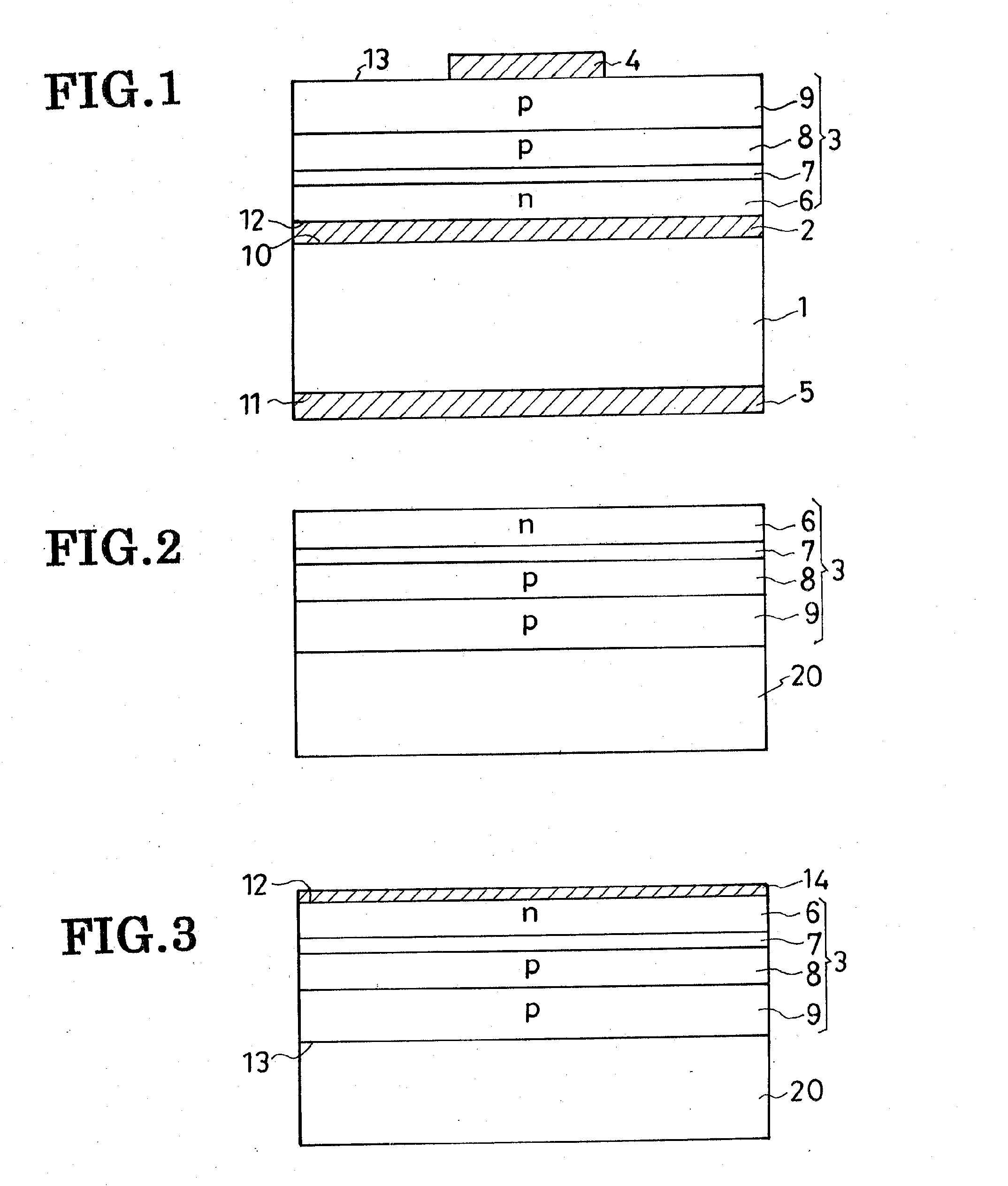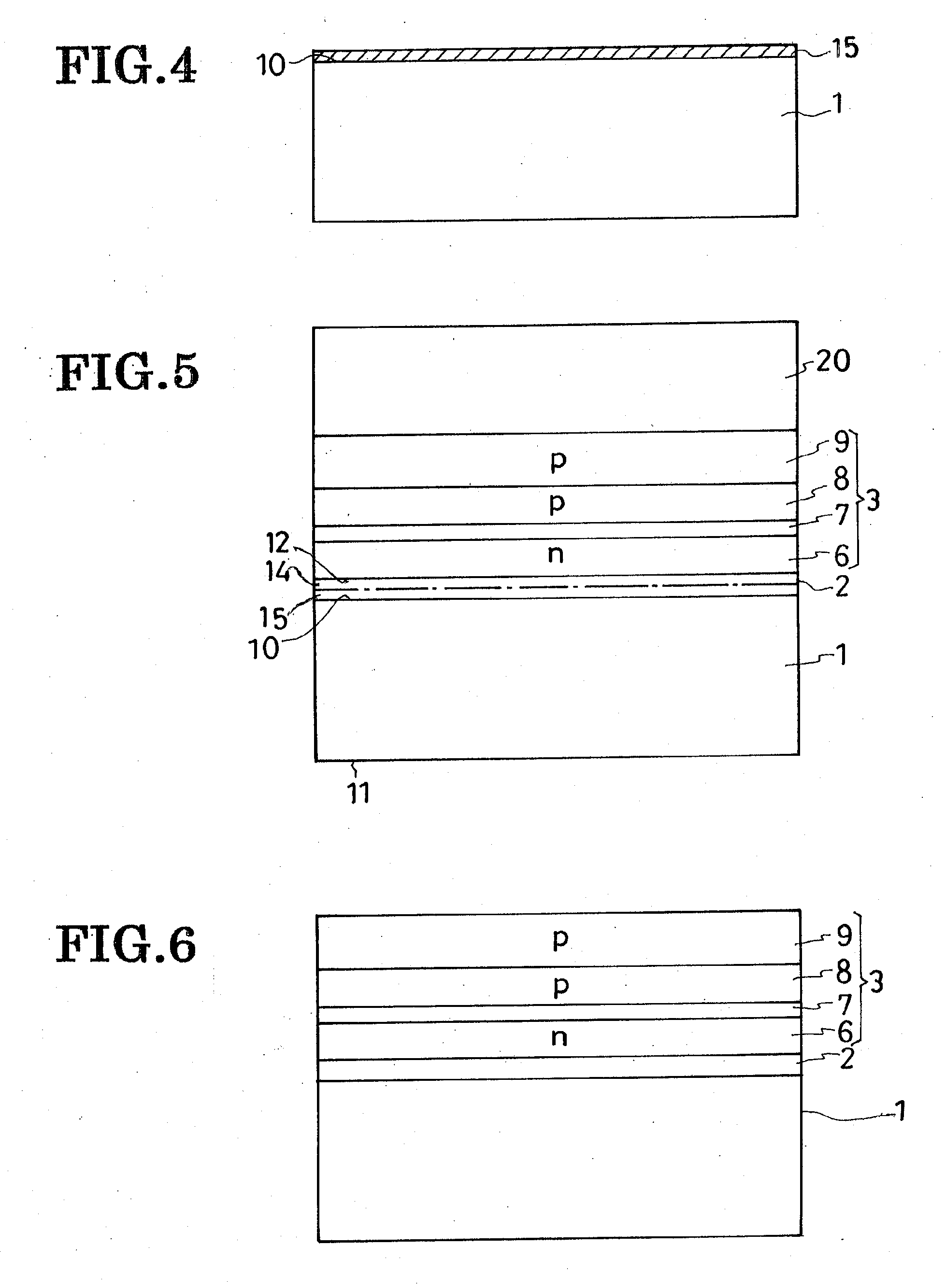LED having a reflector layer of improved contact ohmicity and method of fabrication
- Summary
- Abstract
- Description
- Claims
- Application Information
AI Technical Summary
Benefits of technology
Problems solved by technology
Method used
Image
Examples
embodiment
of FIG. 8
[0065]FIG. 8 shows another preferred form of LED embodying the principles of the present invention. This LED differs from that of FIG. 1 in:
[0066] 1. A difference in size between baseplate 1 and light-generating semiconductor region 3.
[0067] 2. The position and shape of the second electrode or cathode 5.
[0068] 3. The introduction of a current blocking layer or current baffle 21.
[0069] 4. The shape of a reflector layer 2a.
[0070] As seen from above the LED, the baseplate 1 is larger than the light-generating semiconductor region 3. With the light-generating semiconductor region 3 placed centrally on its upper major surface 10, the baseplate 1 has an annular ledge protruding outwardly of the semiconductor region 3. The cathode 5 is formed on this annular ledge of the baseplate 1 in electrical contact therewith and is correspondingly modified in shape.
[0071] The current baffle 21 is interposed between the upper major surface 10 of the baseplate 1 and the lower major surfa...
PUM
 Login to View More
Login to View More Abstract
Description
Claims
Application Information
 Login to View More
Login to View More - Generate Ideas
- Intellectual Property
- Life Sciences
- Materials
- Tech Scout
- Unparalleled Data Quality
- Higher Quality Content
- 60% Fewer Hallucinations
Browse by: Latest US Patents, China's latest patents, Technical Efficacy Thesaurus, Application Domain, Technology Topic, Popular Technical Reports.
© 2025 PatSnap. All rights reserved.Legal|Privacy policy|Modern Slavery Act Transparency Statement|Sitemap|About US| Contact US: help@patsnap.com



